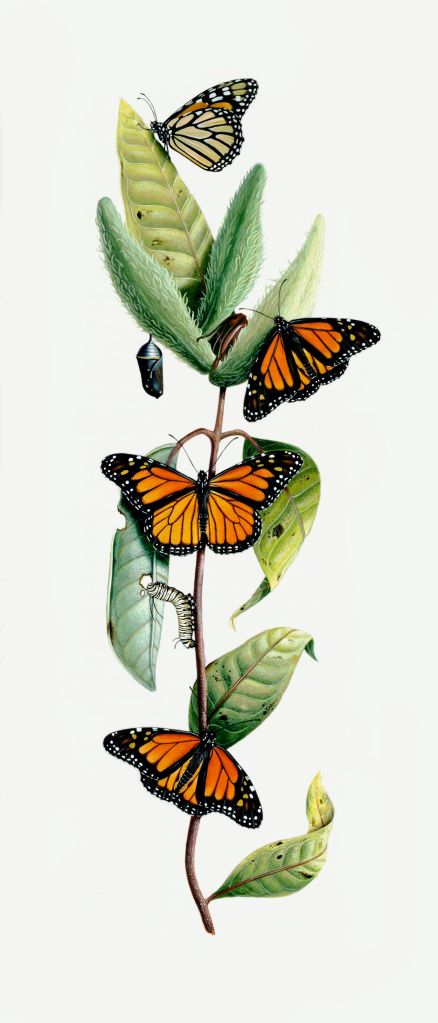Written by: Bridget Ker, Coordinator, The Saint John’s Bible, Diocese of Hamilton
The theme of the last day of Catholic Education Week 2021 is Marvelling in Wonder. I am fortunate to work with The Saint John’s Bible: an illuminated bible whose pages reflect a deep reverence for the natural world and a delight in the plants and creatures who inhabit it. A bit of background: The Saint John’s Bible is a hand-written and hand-illuminated bible created through a partnership between British calligrapher Donald Jackson (along with his team of artists, scribes and assistants) and the monks at Saint John’s Abbey, a Benedictine monastery in Minnesota. It has 160 illuminations – paintings that feature real gold, platinum or palladium, and each and every word was written out by hand using feather quills.

On the Bible’s pages are joyous, visual celebrations of the natural world, from the very first illumination. Opening the pages of the Pentateuch volume, the Creation illumination sings out with the glory of those first seven days, each day with its own panel. Looking closely at each panel, you can see where the natural world inspired the artist. The blues and greens of the Ganges River Delta as seen from space fill day three, while baby fish swim through the clear blue waters of day five.

To the Ends of the Earth, the final illumination in Acts, gives us the whole of nature by including an image of the Earth from space. It encompasses all of creation in a single illumination. It is similar to the first images of earth seen from space.
Illuminations are not the only type of art found in The Saint John’s Bible. On its pages, in the margins, live a multitude of insects, arachnids, and other creatures. The creators of the Bible made a deliberate choice to include these creatures as a running motif throughout the various books of the bible. In addition to being beautiful, unexpected inhabitants on the page, the insects and other creatures also make us reflect – on the locations where the Bible was created and on the words of the Scriptures.


One of the goals of having these creatures present is to make us think about the real locations where the participants who worked on the Bible lived. What would we see if we took a stroll around Donald Jackson’s studio in Wales or St. John’s Abbey in Minnesota? Seeing those creatures puts us in their shoes, showing us the natural world around the real people whose work and creativity made The Saint John’s Bible possible. It wasn’t printed, it wasn’t digitally recreated, real hands put quill to vellum. So you will see a common yellow swallowtail butterfly in the Pentateuch volume that you would also find in Minnesota and in the United Kingdom. Dragonflies are another insect you find both in Wales and Minnesota and they show up many times on the Bible’s pages. Two dragonflies perch on Yorkshire fog grass as an acknowledgement of the plants that can be found in Donald Jackson’s childhood home of Yorkshire.

The images of the natural world can also offer readers another way to enter into Scripture, while at the same time reflecting the creatures found in Minnesota and Wales. The detailed illumination of monarch butterflies found in the Gospel of Matthew is inspired by the monarchs who visit Saint John’s Abbey every year. The Abbey is on the path of their migration. As they fly to and from Mexico, the butterflies stop at Saint John’s to feed on the abundant milkweed on the grounds. Looking closely at the illumination, you can see a caterpillar and chrysalis, along with full grown butterflies – all of the stages in a butterfly’s lifecycle. It really speaks to transformation. The location of the illumination at the end of the Gospel of Matthew makes us think of Jesus’s transformation through the crucifixion: life, death, and resurrection.
This past year, COVID has changed all aspects of our lives. We cancelled all of our bookings in March 2020. We turned to virtual programming to continue bringing the beauty of the Bible to schools in the Diocese of Hamilton. This year, we’ve focused on a program we call Bugs in the Bible. Bugs in the Bible highlights the images of the natural world in The Saint John’s Bible, with a focus on how the immersion in specific environments inspired its creators. We meet natural history illustrator Christ Tomlin and hear his story of being so inspired by the natural world, especially insects, that he has travelled the world to document it in his art. We look at images of creatures that put us in the real places the creators of The Saint John’s Bible lived and worked. The hope is that this will inspire the students to look closely at the world around them. What wonders are waiting for them in their own environments. In a time when we have to stay close to home, it reminds us of the beauty of the world right around us. No matter where students are – at school or learning from home – we are privileged to be able to share The Saint John’s Bible and use it to inspire a sense of wonder.
Credit for header image: Garden of Eden, Donald Jackson with contributions from Chris Tomlin, Copyright 2003, The Saint John’s Bible, Saint John’s University, Collegeville, Minnesota, USA. Used by permission. All rights reserved.